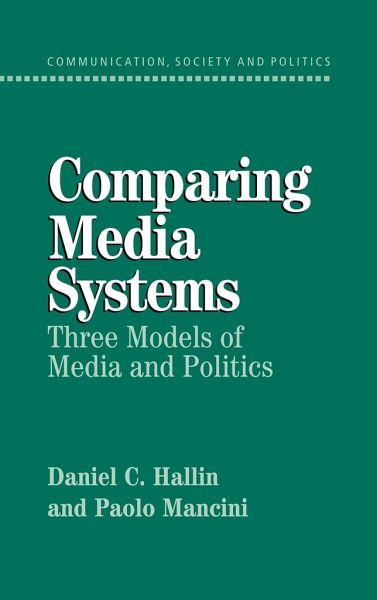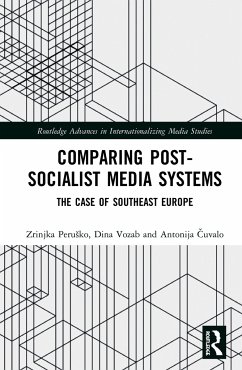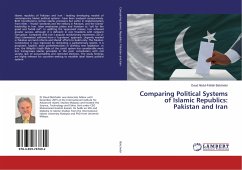
Comparing Media Systems
Three Models of Media and Politics
Versandkostenfrei!
Versandfertig in 1-2 Wochen
105,99 €
inkl. MwSt.
Weitere Ausgaben:

PAYBACK Punkte
53 °P sammeln!
Building on a survey of media institutions in eighteen West European and North American democracies, Hallin and Mancini identify the principal dimensions of variation in media systems and the political variables which have shaped their evolution. They go on to identify three major models of media system development (the Polarized Pluralist, Democratic Corporatist and Liberal models) to explain why the media have played a different role in politics in each of these systems, and to explore the forces of change that are currently transforming them. It provides a key theoretical statement about th...
Building on a survey of media institutions in eighteen West European and North American democracies, Hallin and Mancini identify the principal dimensions of variation in media systems and the political variables which have shaped their evolution. They go on to identify three major models of media system development (the Polarized Pluralist, Democratic Corporatist and Liberal models) to explain why the media have played a different role in politics in each of these systems, and to explore the forces of change that are currently transforming them. It provides a key theoretical statement about the relation between media and political systems, a key statement about the methodology of comparative analysis in political communication and a clear overview of the variety of media institutions that have developed in the West, understood within their political and historical context.
Table of contents:
Part I. Concepts and Models: 1. Introduction; 2. Comparing media systems; 3. The political context of media systems; 4. Media and politics and the question of differentiation; Part II. The Three Models: 5. Mediterranean or polarized model; 6. North/Central European or democratic corporatist model; 7. North Atlantic or liberal model; Part III. The Future of the Models: 8. Homogenization; 9. Conclusion.
An answer to the question first raised in the classic, 'Why is the press as it is?', examining the development of media systems in eighteen Western countries, and explaining why media systems evolved differently, and how their evolution can be understood within their political and historical context.
A comparative analysis of the relation between the media and the political system.
Table of contents:
Part I. Concepts and Models: 1. Introduction; 2. Comparing media systems; 3. The political context of media systems; 4. Media and politics and the question of differentiation; Part II. The Three Models: 5. Mediterranean or polarized model; 6. North/Central European or democratic corporatist model; 7. North Atlantic or liberal model; Part III. The Future of the Models: 8. Homogenization; 9. Conclusion.
An answer to the question first raised in the classic, 'Why is the press as it is?', examining the development of media systems in eighteen Western countries, and explaining why media systems evolved differently, and how their evolution can be understood within their political and historical context.
A comparative analysis of the relation between the media and the political system.














